Restaurant Staffing: Key Findings
- Restaurants need a mix of front-of-house and back-of-house roles for smooth service.
- Staffing ratios vary: one Server typically manages 4–5 tables, while Cooks cover about 50 tables.
- Effective communication, training and scheduling are crucial for retaining staff and ensuring quality service.
Restaurant staffing is the foundation of a successful business. Hiring the right people helps cut unnecessary costs, reduce turnover and streamline operations.
With a strong team, you can deliver excellent service without disruptions like slow dining times or overworked employees. Prioritizing staff productivity not only supports your team but also improves customer satisfaction.
Key Positions in Restaurant Staffing

A well-structured restaurant relies on a variety of roles to ensure smooth operations and exceptional customer service.
Key positions include:
- Host/Hostess: Greets guests, manages reservations, and seats customers efficiently.
- Server: Takes orders, serves food and beverages, and addresses customer inquiries.
- Busser: Clears tables, resets dining areas, and assists servers in maintaining cleanliness.
- Line Cook: Prepares menu items according to recipes and ensures timely service.
- Dishwasher: Cleans dishes, utensils, and kitchen equipment to maintain hygiene standards.
- Barista/Bartender: Prepares and serves beverages, both alcoholic and non-alcoholic, while engaging with customers.
Each role is integral to delivering a seamless dining experience and requires specific skills and attributes.
Strategies for Effective Restaurant Staffing and Management
Managing restaurant staff effectively is crucial for operational success and employee satisfaction.
Key strategies include:
- Strong communication skills: Foster clear and open communication channels to ensure staff understand expectations and can provide feedback.
- Comprehensive training: Equip staff with the necessary skills and knowledge to perform their roles confidently and efficiently.
- Teamwork: Promote a collaborative environment where team members support each other to enhance service quality.
- Performance: Acknowledge outstanding work to boost morale and motivate staff.
- Flexible scheduling: Accommodate staff availability to reduce burnout and increase job satisfaction.
By implementing these strategies, restaurants can improve staff retention and provide a better dining experience for customers.
How Many Waiters Does a Restaurant Need?
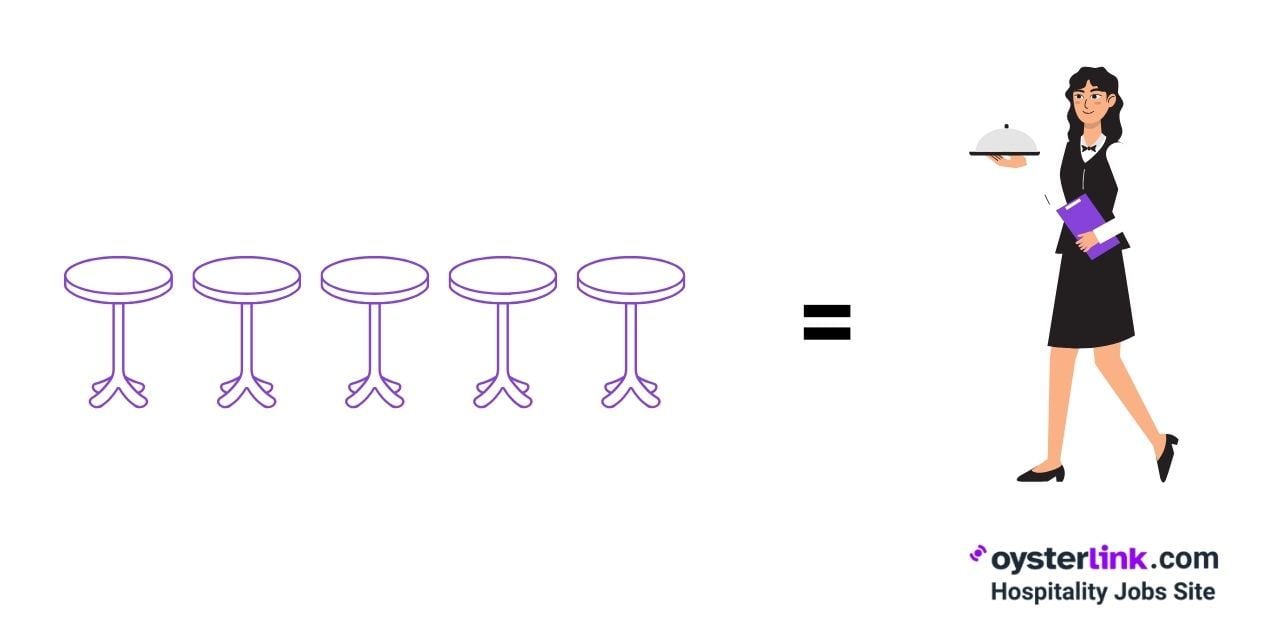
The average is usually five tables per one Waiter/Waitress, but there’s not one answer to this question, as it all depends on the following factors:
- How large is your establishment
- How complex is your menu
- How busy does it get during the day
That means that if you have a restaurant with 25 tables, you want to make sure you have five Waiters serving five tables each. So, the average should be one Waiter/Waitress per five tables. Some might be able to handle more and some less, but that’s the average.
If you overburden the Waiter with extra tables, they might not be able to provide the service your guests are expecting. This can then lead to customer dissatisfaction and, eventually, revenue loss.
How many tables does a Waitress serve a day?
In most establishments in the U.S., Waiters and Waitresses are in charge of four to five tables. In low-scale restaurants, they could be handling two or three tables extra. Similarly, in upscale or fine-dining restaurants that offer exclusive service, Waiters can sometimes serve up to three tables only.
How many tables does a Waiter serve in an hour?
There isn't a definitive answer to this question. If it’s not busy, then Waiters can serve one table every hour. However, when it’s busy, they might be unable to catch a break. On average, Waiters in the U.S. report serving three tables in 60 minutes during peak hours.
How Many Cooks Does a Restaurant Need?
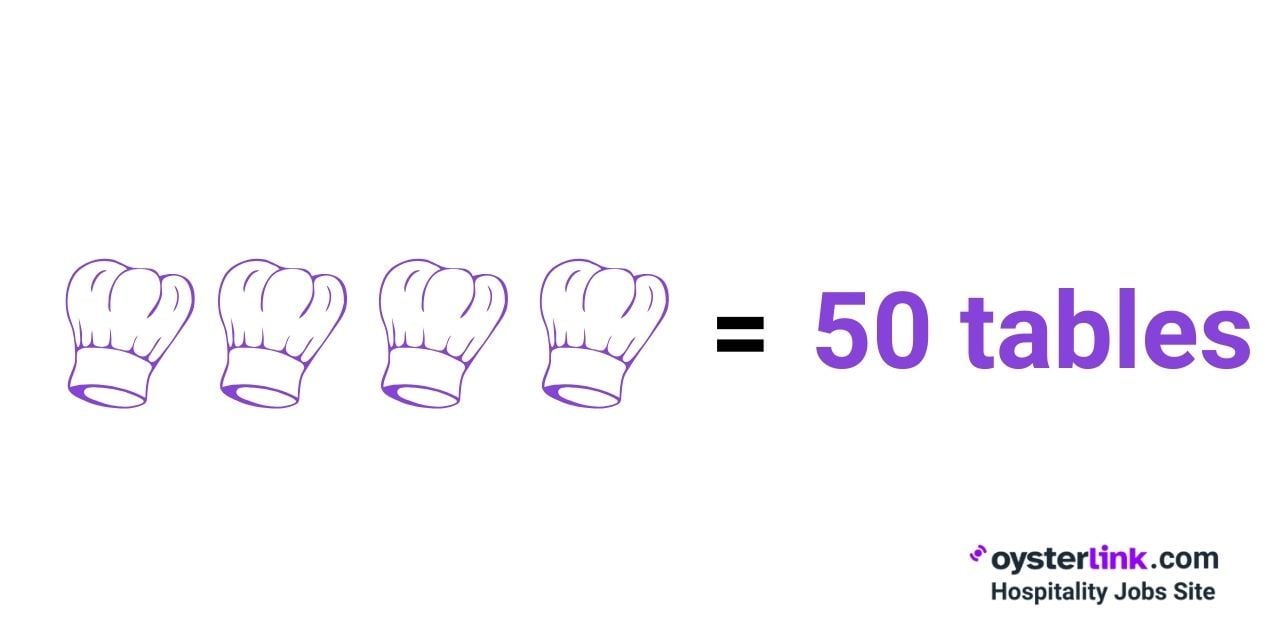
Depending on the size of the kitchen, most employers hire four back-of-house staff members. These four are expected to prepare the food for up to 50 tables.
Also, it doesn’t necessarily have to be the Cooks who prepare the food, as experienced Prep Cooks or Chefs can handle some of the Cook’s responsibilities. However, having a designated Cook in the establishment is sure to improve the kitchen operations and reduce the burden on other staff members.
How Many Chefs Does a Restaurant Need?
While big franchises and chains don’t require a dedicated Chef on their premises, small restaurants can manage their operations with one to two Chefs in a restaurant. Similarly, most family-owned eateries don’t hire Chefs as they usually serve homemade recipes passed down from their families.
Medium-sized establishments typically require up to five Chefs. However, this will, of course, depend on the food place itself. Large restaurants can hire up to 10 Chefs who will create the menu, plate the food and oversee the food preparation.
How Many Tables Should a Server at a Fine Dining Establishment Serve at a Time?
Typically, a Server should serve three to four tables at a fine dining restaurant. This way, the Server will establish a more personal connection with the customers and improve their overall experience at your place.
This is considered a perfect ratio in the industry, as waiting on more tables can, often, overburden the Server at work, which will then result in a lower standard of service. Also, waiting on less than three tables might not be the best use of the Server’s time and efficiency.
How many Servers should a restaurant have?
It’s usual for self-serving restaurants to have one Server per 12 tables. This is only because, in these specific types of establishments, customers can manage pretty much everything on their own.
However, a service-oriented restaurant should designate at least one Server per five to six tables. That way, the Server will have enough time to address every customer’s needs without compromising the speed and quality of the service.
In fine-dining restaurants, Servers are expected to wait at about three tables. These institutions offer a more premium service, which is why it’s crucial for Servers to pay special attention to details and be at customers’ disposal at all times.
How many tables can a Server handle?
Similarly to Waiters, most Servers can comfortably handle four tables per hour. Depending on how busy it gets, this number can increase or decrease throughout the day.
How many tables does a Server have per shift?
In an eight-hour shift, most Servers end up waiting for 32 tables in a day. Usually, this amounts to five guests per table, which ultimately leads to serving 160 customers in one shift.
How Many Employees Does a Restaurant Need?
To figure out exactly how many staff members you need to successfully run a restaurant, start by determining the number of tables that will be served throughout the shift(s). In most cases, there is one front-of-house staff member in charge of three to five tables.
How many kitchen staff are needed?
When it comes to the kitchen, you want to designate one staff member per five tables. However, the exact number will largely depend on other factors, such as your restaurant's size, customer traffic and shift duration.
Restaurant Staffing: Conclusion
Effective restaurant staffing is the cornerstone of operational success, customer satisfaction and financial stability.
By understanding the key roles, implementing strategic management practices and maintaining optimal staff-to-table ratios, restaurant owners can avoid costly mistakes and create a thriving dining environment.
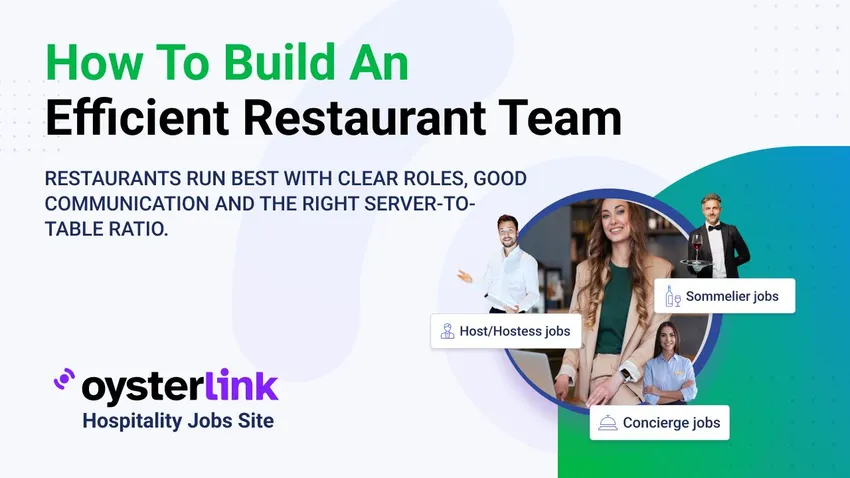


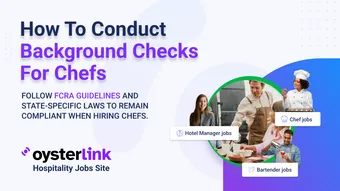
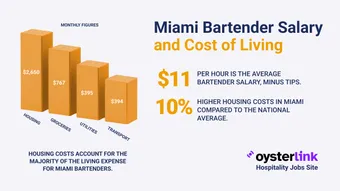
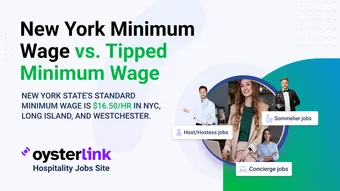
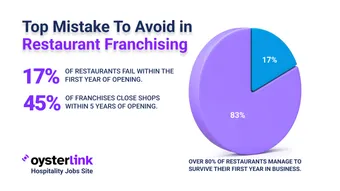


Loading comments...